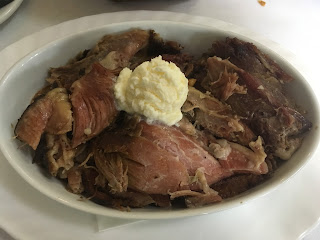 |
| New York, New York. July 2016. |
While this stunning introduction has little to do with the rest of the piece, a travel guide of sorts, it is my single favorite thing I have read about the city if only because it lends words to what I’ve been feeling since I moved here.
To say the least, the Belgrade lifestyle has been an enormous adjustment. As the aforementioned article states, “in Belgrade, people don’t walk, they amble; lunch spans the course of 3 or 4 hours; and drinks are sipped, never knocked back,” a sharp pivot from the undercurrent of urgency that runs beneath nearly everything one does in New York City.
 |
| Street Art in Belgrade, Serbia. March 2017. |
Northeastern prepares students well for culture shocks and ensures that students do their research before moving to a foreign country. I was ready for being surrounded by the Cyrillic alphabet and not being able to speak the language and while most would think those the most difficult adjustments, what I've found most significant is the difference in lifestyle.
I grew up just outside manhattan and was raised in a very competitive, fast-paced environment. Once I began interning in NYC while home over breaks this effect was only heightened.
Everything in New York is done with a sense of urgency whereas in Belgrade, even urgent matters rarely receive that kind of attention.
Even walking is different: unless I’m paying attention I walk everywhere as though I’m schlepping across town late for a meeting, though I never noticed this difference in Boston (admittedly this might have something to do with my barrage of tall, long legged friends who manage to keep up with me effortlessly). In Belgrade, though, the average height seems to be at least 6’0 and yet I’m constantly stopping short to avoid running into backs on the sidewalk. Serbs like to amble, savoring everything around them- a trait that echoes through everything they do.
 |
| A stroll through Vračar March 2017. |
Over the past few months here I've come to enjoy ambling through the cities on my days off; Belgrade is by no means a conventional form of beautiful, but has its charms nonetheless and a sense of character that I will miss dearly.
 |
| The Belgrade waterfront by night. April 2017. |














